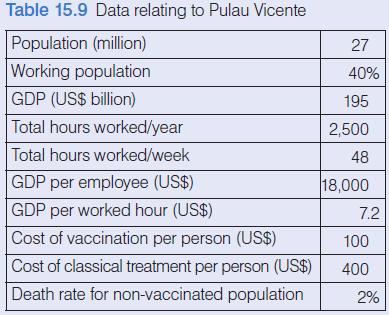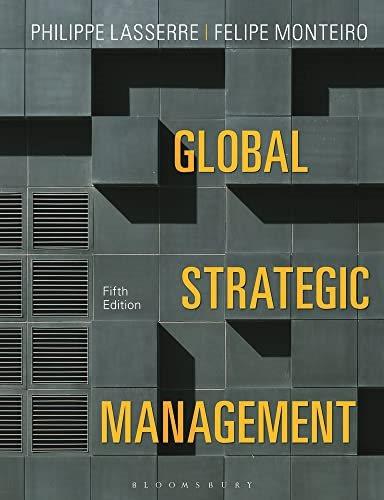Following the Covid-19 pandemic outbreak, which did not affect his territory, the Minister of Health of Pulau
Question:
Following the Covid-19 pandemic outbreak, which did not affect his territory, the Minister of Health of Pulau Vicente, a fictional South Pacific island, was concerned about future possible pandemic of flu carried by wild animals reaching his island.
He asked a group of health and economic experts to form a team in order to evaluate the potential economic and social consequences of a pandemic affecting the island under various contrasting scenarios.
The team gathered first in order to establish a plan of action. They determined that their study would be divided into four phases:
1 List the elements to be assessed in order to build a scenario:
a The impacted issues: what the minister wants to assess in terms of economic and social consequences, and a definition of a measurable variable of those issues
(dependent variables).
b The most important driving forces either external or internal, direct or indirect that can possibly influence the selected issues in the future (independent or intermediate variables).
2 For each driving force, select its possible state of affairs (variables): either the variable is a number (for example, growth rate) or the variable is expressed as a range (high to low, frequent to infrequent). In both cases, no more than three discrete values for each variable would be assigned (the two extremes plus a middle value). The team planned to use a kind of Delphi technique
(asking a group of experts to hypothesize on a given situation interactively and qualitatively).
3 Build a model in which the relationship between variables is represented and calculate the potential outcome of how the variables could affect one another for all value combinations.
4 Analyse each of the projected outcomes and reduce it to a small number of plausible and contrasted stories under the form of ‘scenarios’.
This is considered the most creative part of the exercise, where two or three alternative futures have to be extracted from the data and described within a narrative.
Having adopted this methodology the team financed a series of research studies in order to collect data. Below are the results of their data collection:
a According to the health authorities, the anticipated flu could affect the population with various intensities. Assuming that the virus could be transmitted to humans it was deemed probable that one-tenth of the population could develop the flu, up to a projected maximum of one-third.
b Some experts say that there is no vaccine available but others think that a vaccine could be developed with an efficacy of 30 per cent to 70 per cent.
c The infected population, if not vaccinated or with failed vaccination, could receive a classic treatment to develop self-defence mechanisms (antibodies) but unfortunately around 2–3 per cent would die.
d Statistical data are shown in Table 15.9.
Question:
Using the methodology of scenario building described in Appendix 15.1 can you describe the possible scenarios that illustrate the impact of a pandemic outbreak?
Step by Step Answer:

Global Strategic Management
ISBN: 9781350932968
5th Edition
Authors: Philippe Lasserre, Felipe Monteiro





